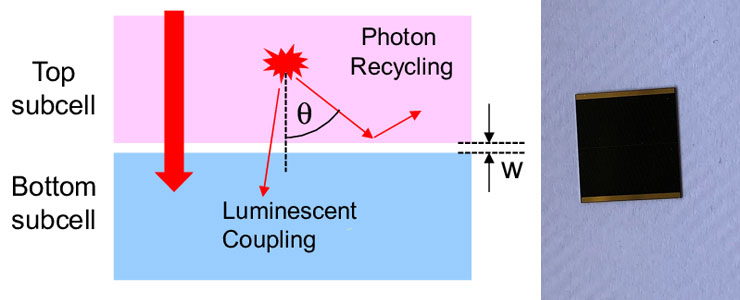The preparation of laminated solar cells can be obtained in two ways: one is the mechanical stacking method, in which two independent solar cells are prepared first, one with high bandwidth as the top cell and the other with low bandwidth as the bottom cell. Then stack the high bandwidth batteries on the low bandwidth batteries. The other is an integrated method. First, a complete solar cell is prepared, and then it is grown on the first layer of cell or deposited directly on the first layer of cell.

The sunlight spectrum can be divided into several continuous parts. The battery is made of materials with the best matching energy band width with these parts, and stacked from outside to inside according to the order of energy gap from large to small, so that the light with the shortest wavelength can be used by the outermost wide gap material battery, and the light with longer wavelength can be transmitted into the battery with narrower energy gap material, This makes it possible to maximize the conversion of light energy into electric energy. Such a battery structure is a laminated battery, which can greatly improve the performance and stability.
Due to the wide energy distribution in the sunlight spectrum, any existing semiconductor material can only absorb photons whose energy is higher than its energy gap value. Photons with small energy in sunlight will pass through the battery and be absorbed by the back electrode metal and converted into heat energy: the excess energy of high-energy photons beyond the energy gap width will be transmitted to the lattice atoms of the battery material itself through the energy heat release of photogenerated carriers to heat the material itself. These energy can not be transmitted to the load through photogenerated carriers and become effective electrical energy. The theoretical conversion efficiency of this single junction solar cell is generally low.
This makes it possible to maximize the conversion of light energy into electric energy. Such a battery structure is a laminated battery, which can greatly improve the performance and stability.